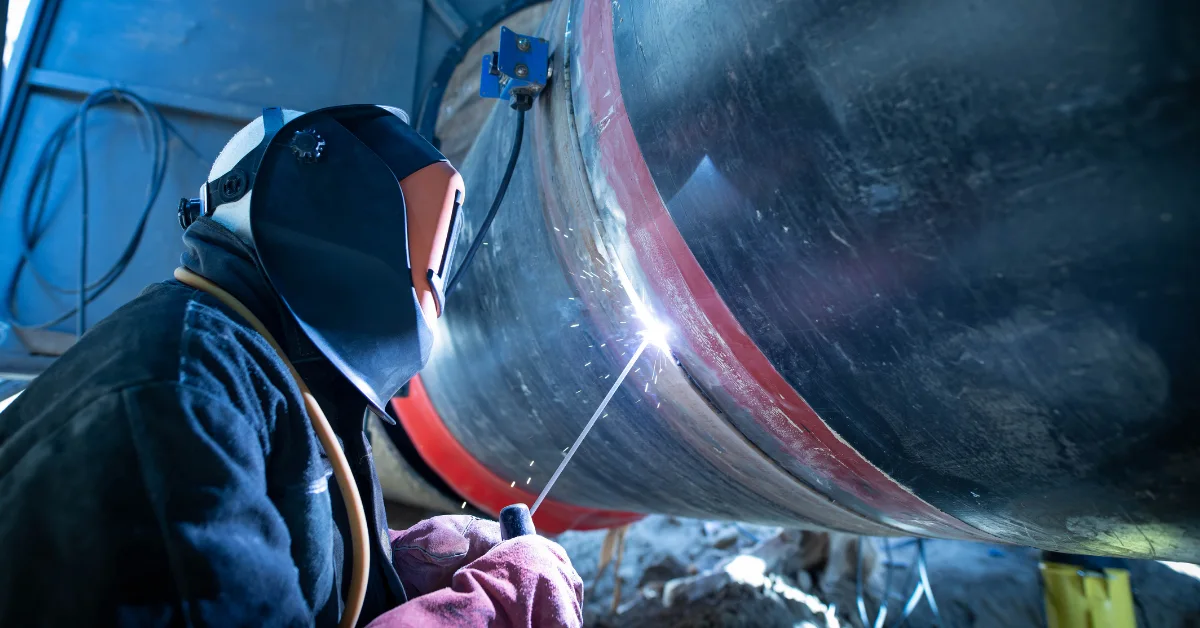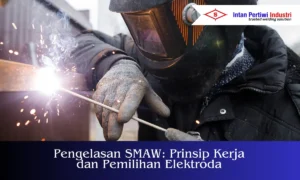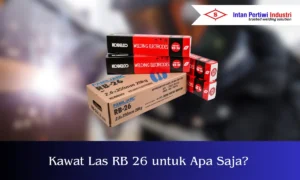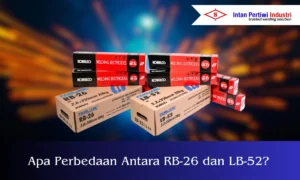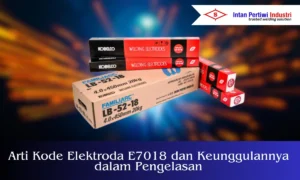The function of LB and RB welding wire is an important topic that is often sought by welders, engineers, and engineering students because these two types of electrodes have different roles in welding.
Welding is a critical process in the manufacturing, construction, and shipping industries. The success of a joint is determined not only by the welder's skill but also by the selection of the appropriate welding wire.
The two most popular types of welding wire that are widely used in various sectors are LB (Low Hydrogen-Basic) welding wire and RB (Rutile-Basic) welding wire.
Understanding the function of LB and RB welding wire will help welders, engineers, and engineering students to determine the right choice for every job.
This article discusses in detail the functions, advantages, differences, and practical applications of the two types of welding wire so that it can be used as a guide in the field.
Table of Contents
ToggleFunction of LB and RB Welding Wire
LB and RB welding wires have different functions based on their mechanical properties, flux coating type, and application requirements. Each is designed for a specific purpose, so its use must be tailored to the material and job standards.
Function of RB (Rutile-Basic) Welding Electrode
A popular product in this category is RB 26 welding wire, which is widely used in general construction projects. If you're still unsure about choosing the right diameter, check out this guide how to choose RB-26 welding wire size for optimal welding results.
Main characteristics and advantages of RB welding wire:
Suitable for mild steel such as ST.41 steel which is often used in building construction.
Smooth weld results with a neat surface and minimal spatter.
Stable in various welding positions, including vertical and overhead positions.
Slag or slag is easily removed, thus speeding up the work.
Common applications of RB welding wire include:
Construction of light steel and medium steel buildings.
Manufacturing of storage tanks, pipes, and agricultural machinery.
Ship fabrication with thin to medium plate thickness.
RB-26 welding wire is often the choice when projects require high efficiency with neat results, even on less critical materials.
Function of LB (Low Hydrogen-Basic) Welding Electrode
LB welding wire is a low-hydrogen coated electrode designed to produce high-strength, crack-resistant joints. The most well-known product in this category is the LB52 welding wire.
Main characteristics and advantages of LB welding wire:
Designed for high tensile strength steel, for example ST.52 steel with grade 490 MPa or more.
The welds have excellent resistance to both dynamic and static loads.
The connection is more resistant to hydrogen cracking, making it very reliable for heavy structural work.
Complies with internationally recognized AWS A5.1 E7016 or JIS Z3211 E4916 standards.
Common applications of LB welding wire include:
Steel bridge construction demands the best quality connections.
Fabrication of pressure vessels, boilers and high pressure tanks.
Construction of large ships with the need for durable connections.
Steel frames in high-rise buildings or heavy industrial structures.
LB52 is often the first choice when projects require assurance of quality connections that meet high safety standards.
Difference between LB and RB Welding Electrode
Even though they are both SMAW (Shielded Metal Arc Welding) electrodes, LB and RB welding wires have significant differences that mean they cannot be substituted for each other in all conditions.
1. Material Type and Strength
RB: More suitable for mild steels such as ST.41 with standard tensile strength requirements.
LB: Designed for high strength steels such as ST.52 with higher load-bearing connection requirements.
2. Flux Layer
RB: Uses a rutile-based coating that easily produces a stable arc and makes welding easier.
LB: Using a low hydrogen layer which functions to suppress the hydrogen content, thereby reducing the risk of cracking.
3. Results and Quality of Connection
RB: Produces neat, smooth, and easy-to-work welds, suitable for general work.
LB: Produces high-strength, crack-resistant welds that meet critical project standards.
4. Field Application
RB: Light to medium construction, general fabrication, daily repairs.
LB: Heavy infrastructure projects such as bridges, power plants, large ships, and pressure vessels.
Here's a simple comparison table:
| Aspect | RB (Rutile-Basic) | LB (Low Hydrogen-Basic) |
|---|---|---|
| Main materials | Mild steel (ST.41) | High strength steel (ST.52) |
| Tensile strength | Standard | Height ≥ 490 MPa |
| Welding results | Smooth, stable, easy | Crack resistant, strong, premium quality |
| Difficulty level | Easy to use, suitable for beginners | Requires higher skills |
| General application | Buildings, pipes, agricultural machinery | Bridges, ships, pressure vessels |
This difference explains why welding wire selection cannot be arbitrary. Using RB in a job that requires LB can have fatal consequences for the structure's strength.
Conclusion on the Function of LB and RB Welding Wire for Industry
LB and RB welding wires have specific, complementary functions. RB, such as KOBELCO RB-26, is the best choice for general construction, light fabrication, and everyday jobs that require efficiency with neat results.
While LBs like the KOBELCO LB-52 are the solution for medium to heavy projects that demand high tensile strength and maximum durability.
In summary:
Choose RB for mild steel, general projects, and more practical needs.
Choose LB for strong steel, heavy structures, and projects requiring high safety standards.
For companies, distributors, and professional welders, understanding the differences in the functions of LB and RB welding wire is very important to ensure safe and high-quality welding results.
See the products RB 26 welding wire and LB 52 welding wire for detailed specifications and official offers.
If you need further technical recommendations or want to consult about the choice of welding wire according to project needs, immediately contact PT Intan Pertiwi Industri as the official manufacturer of KOBELCO welding wire in Indonesia.
By selecting the right welding wire, your welding results will be more optimal, efficient, and meet industry standards. To order, you can contact our sales team directly through our official website or through the contact information provided.


